Back in Spring 2024 I was interviewed by Joe from the Strange Old World podcast about Andalusia. Here´s is the transcript from that interview. To listen scroll to the link at the bottom of the page.
Joe Str Old World – Hello and welcome to Strange Old World, the podcast where we wheedle out the weird in the world’s oldest cities and regions. I’m Joe, and in every episode I talk to a local experts in a different part of the world and ask them for a strange thing to see, a strange thing to do, a strange thing to eat, and more.
Joe Str Old World (00:01:19) – In this episode, we’re talking about Andalusia. This autonomous region of Spain has a long and varied history, shaped by Carthaginians, Romans, Vandals, Visigoths, Saracens and pretty much every other group with a cool sports team name. As such, it’s collected its fair share of cultural oddities, something I’ll be discussing with today’s guest, Molly Sears-Piccavey. Molly is the creator of Piccavey.com a travel blog with a big old focus on Andalusia. You can read her articles on local culture, food and travel in Spain.
Joe local experts in a different part of the world and ask them for a strange thing to see, a strange thing to do, a strange thing to eat, and more.
Molly also personally designed travel itineraries to Andalusia. You can contact her through her website and conducts food tours in Seville, Malaga and Granada at Spain Food Sherpas. So in this episode, you’ll hear about all manner of unusual Andalusian attractions, from lambs testicle omelettes to crowds of men in robes and pointed hoods. But luckily not the ones you’re thinking of.
Strange Old Andalusia
Joe – Strange Old World (00:00:00) – I think that people always should be aware that Andalusia is a very family orientated destination. children are very welcome. People are very accommodating. Even if you don’t speak any Spanish, people genuinely try to help you along and it’s very, very safe. Shops are open until 10:00pm in most towns and cities, and 10:00pm is when the Spanish locals are having their dinner.
Joe (00:00:26) – With with the kids, right? The kids are still out and about. Yes.
Molly (00:00:29) – Children running around at 10:00pm at night. Perfectly fine. So people should not be so concerned about going out after dark and just be really relaxed and kind of slip into the kind of vibes of what’s around here, which is very family orientated, very social.
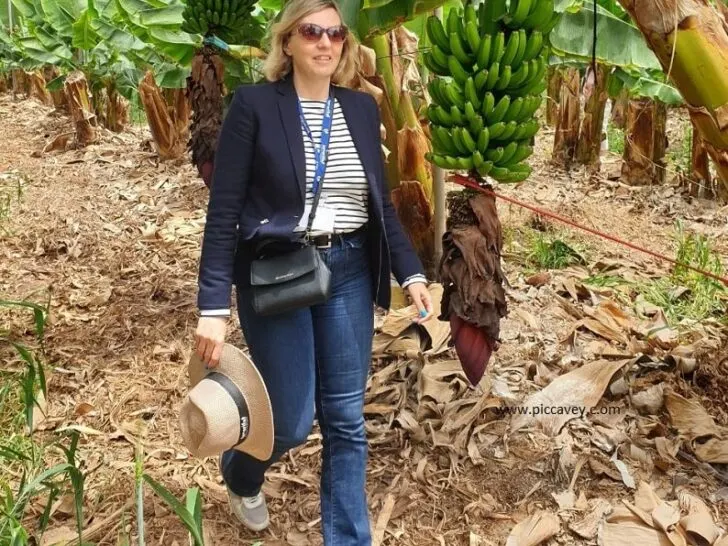
Joe (00:02:31) – Right. So that’s enough. Pre waffle. Let’s discover strange old Andalusia. Welcome to the podcast, Molly Sears Pickaway, a food, travel and culture writer based in Granada, Andalucia, Southern Spain. You’re originally from Nottinghamshire, I believe. So how did you end up in Spain?
Molly (00:03:06) – Yeah, I’ve been in Spain since 1998, so a really long time. I’m from North Notts, from a small village called Underwood, and I moved to Barcelona in 1998 originally, and then some years later, nine years later, I moved down to Granada in in Andalusia in the south.
Why did I move to Barcelona?
Joe (00:03:26) – So why did you make the move to Barcelona in the first place?
Molly (00:03:29) – So I did, languages when I was at school, and I was just always fascinated with words and languages, and I did French and Spanish and, I was a bit frustrated by teachers and the academic system, like the way they was teaching languages.
Molly (00:03:47) – And I thought it was too slow and too technical and too grammatical, and I didn’t like it. So to choose not to go to university like it was, I got a place at university but didn’t want to go and soon after got on the plane to Spain.
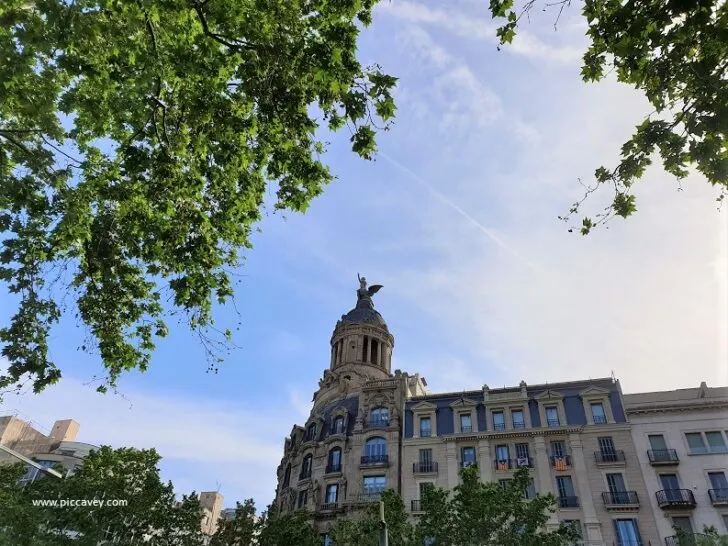
Joe (00:04:00) – Okay, interesting. So as you said, you were in Barcelona at the beginning, then you moved down to Granada. why did you choose to settle down there and Andalusia in general?
Molly (00:04:09) – Career wise, I was in a corporate role and, things weren’t going how I wanted them to go in my job.
Molly (00:04:42) – So then I wanted to leave the company and started looking for jobs, in Barcelona and in Granada. And I got an amazing opportunity in Granada with Telefonica. Okay. So it was just, I don’t know, like a bit like destiny. I got this really amazing job opportunity in the city where my partner was moving back to. So yeah, that’s what happened.
From Catalonia to Andalusia
Joe (00:05:05) – And how long ago was that?
Molly (00:05:07) – so that was 2006, I think. Okay. And I worked at Telefonica for 11 years. So it was a it was a good move. Yeah.
Joe (00:05:16) – Wow. Okay. You also have a blog. Yeah. So when did you start that. Was that since you’ve been down in Granada?
Molly (00:05:26) – I started the blog more or less at the same time as I moved from Barcelona to Granada. A lot of people in Barcelona wanted to keep up with what I was doing in Granada, friends and family. And also, I think it was a bit of a answer to the culture shock, because you think the culture shock would have been from Nottingham to Barcelona, but it wasn’t.
Molly (00:05:47) – It was from Barcelona to Granada. It was huge. Wow. Okay. Huge.
Culture Shock
Joe (00:05:52) – So what was it about Andalusia that caused the culture shock?
Molly (00:05:56) – The thing is, I was in Barcelona and I was in a company that there were people from all over the world, and actually there weren’t many Spanish people. It was people from everywhere else except Spain. That’s where I worked in Barcelona. So there was no normal in that environment. There was no there was no standard because everybody was weird, shall we say. Everybody had their own thing going on.
And then when you go outside in Barcelona, there was no normal either, because it’s a little bit like London. Everyone is from somewhere else. The Spanish living there are not from Barcelona- They’re from Galicia, or they’re from Andalusia, or they’re from Extremadura, from everywhere, all mixed up. And then there’s a lot of non Spanish in Barcelona. You’d go out in Barcelona just I mean just like regularly on the street and nobody would ask you, what are you doing here, why are you here.
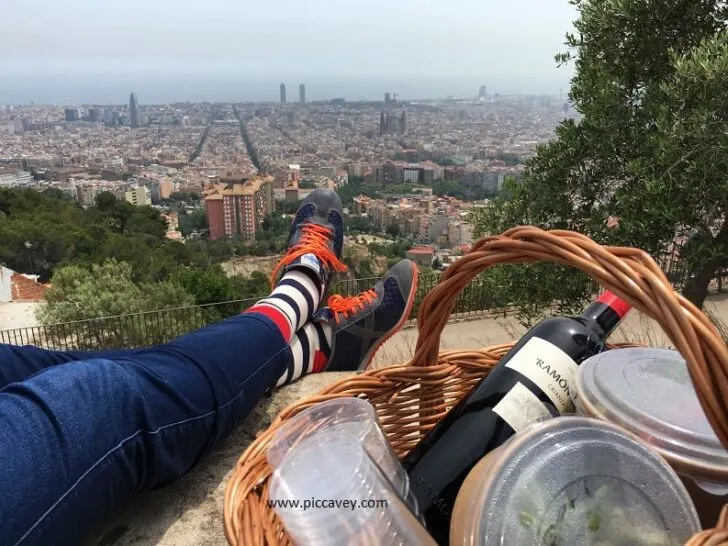
Big city to Small Town
Molly (00:06:47) – It was just that’s how Barcelona was. So then when I got to Granada, all the people around me were Spanish. So I had no expats around. None. My Spanish was very, very good then. Although not quite as good as it is now, but it was very advanced. It was a business level of Spanish.
But the banter….. No. I’d get stung many times a day with the office politics and the. Yeah. So the learning curve was very, very steep.
Joe (00:07:20) – One thing you do do in English is you write your blog, so you have some really good cultural resources for visitors to Andalusia. I particularly enjoyed your piece on street food in Granada recently, but also articles on kind of wider Spanish culture. You just published a piece on the Spanish Christmas lottery.
Molly (00:07:39) – That’s a big thing, a big deal. Yeah.
Joe (00:07:41) – Well, I was going to ask if you have any particular articles you wanted to to highlight, maybe tell me a bit about the lottery. It’s a very particular cultural quirk.
Molly (00:07:49) – Right.
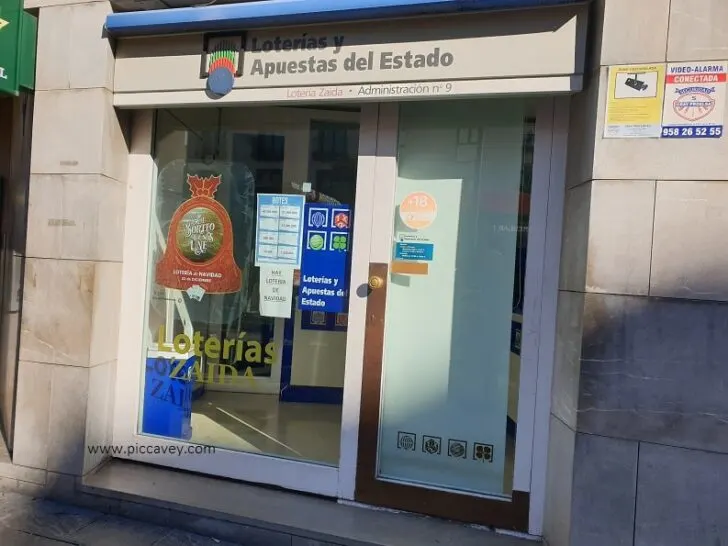
Whats special about the Spanish Christmas Lottery?
Molly (00:07:50) – Wow. Yeah. It’s something that. I mean, I understand that some people are against gambling or don’t they think it’s a negative thing, but the Spanish lottery is something that if you live in Spain, you cannot avoid, like you can’t avoid it. It’s just all consuming. So imagine I’m here. I don’t want anything to do with the lottery and I’m just doing my normal life. I’m working in my office at home, but in the morning I go out for coffee in the neighbourhood bar. The neighbourhood bar has a number, so if I go to the neighbourhood bar, I buy this number, right? So if this number comes out on the Christmas lottery, the whole bar and all of the customers win.
Joe (00:08:32) – Oh, okay.
Molly (00:08:34) – The thing is, I go to that neighbourhood bar every day. So I know the barman. I know the guy with a dog. It’s a bit of a community thing. Okay? So I don’t want to go to the bar, and they’ve all won the lottery, right?
Joe (00:08:48) – So there’s a kind of social pressure.
Molly (00:08:51) – Pressure. Right? Okay, so that’s the bar in the afternoon. I go to the gym. The gym’s got a number. Okay. Then on once a month, I go to the hairdressers. The hairdressers got number. You can see where we’re going.
Loteria de Navidad
Joe (00:09:04) – And this is €20 a pop.
Molly (00:09:06) – Yeah. Wow. Well, €20 if you buy it direct from the office. If you buy it from the bar, they’ve bought them ahead of time and they charge you 23 because they charge you an admin fee. And that €3 is like their benefit for their time. Right? Okay.
That’s why I wanted to explain the thing about the numbers, because it’s hard to understand that it’s not just paying the lottery like in other places where you just play the lottery, a few number comes up, you win. If I play the lottery and my number comes up, the whole of the bar where I have coffee wins. So if the bar wins the day of the lottery draw, where are we going? We’re all going to that bar to have a big party all together.
Joe (00:09:48) – Of course it’s obvious.
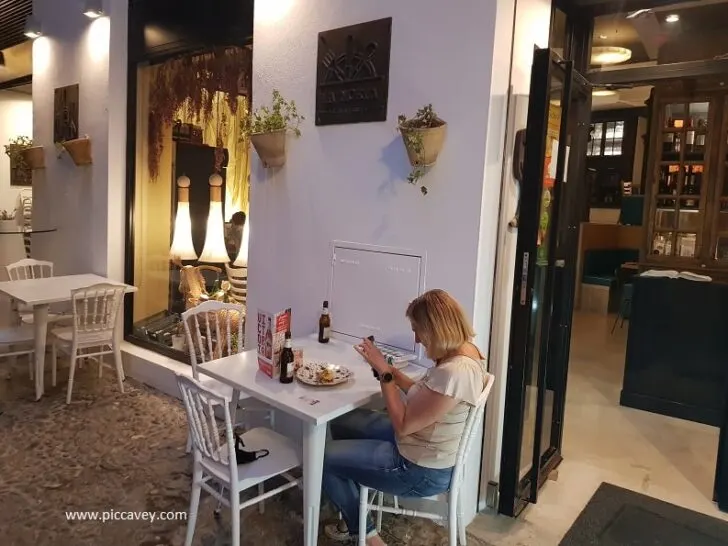
Joe (00:09:50) – So you also conduct food tours. Can you tell me a little bit more about that?
Molly (00:09:55) – I run a food tour in southern Spain, so we’re in Seville, Malaga and Granada. And if people are interested in curiosities like some we’ve discussed today, they’re the kind of things we talk about on the food tour. And of course, the food and why why we eat certain foods in certain places. It’s available every day at midday and in the evening. We work all year round in those three cities. And also I’m on the blog sharing curiosities about, particularly Southern Spain, but the rest of Spain as well.
Joe (00:10:32) – So how do people book your food tours?
Molly(00:10:35) – Spain Food Sherpas is the website, and we’re also on Instagram.
Joe (00:10:52) – This is the part where I ask you for your tips on unusual local attractions. First of all, can you suggest a strange thing to see in Andalusia?
An Unusual Attraction in Andalusia
Molly (00:11:01) – So one of the things that, really jumped out was what I call Andalusian Stonehenge, which is Antequera.
Molly (00:11:10) – there’s a place with Dolmens and they’re really old. They’ve been trying to find out what they were for. They don’t really know if it was a burial site or if it’s like to worship the sun, but it’s just really special. It’s so magical. And the reason I’m recommending this is because Antequera is in the middle of Andalusia. It’s the actual geographical centre of Andalusia.
Okay, so wherever you are, for example, if you’re staying in Granada, it’s very easy to get to and to care. If you’re staying in Malaga, it’s easy to get to Antequera. Same from Seville. It’s the centre. It’s known as the Dolmen of Antequera, and it became a Unesco World Heritage Site a couple of years ago. Maybe, I think 3 or 4 years ago. There’s actually three sites, three different sites, all within a very short distance of each other once Roma once called Menga and once called Viera. And it was built in 1800 BC, a very, very long time ago. (over 3800 years!)
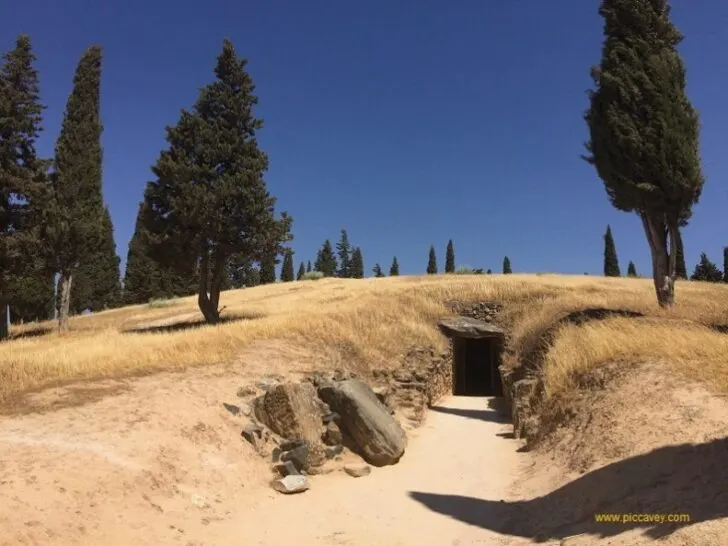
UNESCO World Heritage site
Molly (00:12:16) – It’s actually a megalithic burial site, but all of the locations seem to be pointing to the sun. But the menga one is actually older. It’s third millennium BC. Wow. And it’s one of the biggest in Europe.
Joe (00:12:31) – So is it used now? Do you have, I mean, I know it’s Stonehenge in the UK, you have people going for the traditional pagan festivals, summer solstice and things like that. Does that happen in the south of Spain?
Molly (00:12:41) – No. Okay. Well so far it has not happened. No. It’s just it’s a it’s run as a museum, almost the main, the main site anyway. So it’s like got like a fence and a ticketing system and you have to kind of book your visit. And so no, not that I know of anyway.
Paseo de los Tristes, Granada
Joe (00:13:06) – How about a strange thing to do in Andalusia?
Molly (00:13:09) – Something to do is to walk along the, Paseo de Los Tristes in Granada. Now Paseo de Los Tristes is me literature quoted to be the most beautiful street in the world.
Molly (00:13:24) – Now, I always dispute these things, because for that you would have had to walk all the streets in the world to be able to come to that conclusion. But anyway, it’s a very beautiful street. How does it.
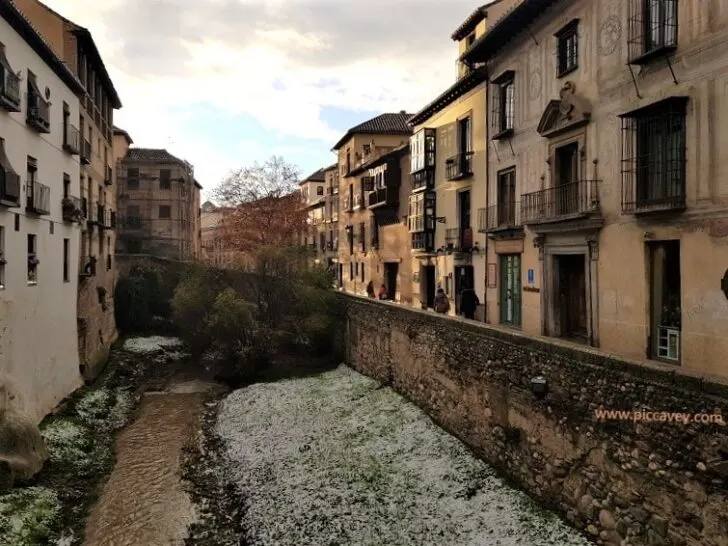
Molly (00:13:33) – Rank on the streets you’ve walked? Yeah, it’s up there.
Molly (00:13:36) – Yeah, it’s up there. It’s so bad. Okay. The name of the street, the official name of the street is not that. It’s something else. It’s called Paseo Padre Manjon. Okay. But nobody calls it that. They all call it the little streets because it’s the street that people would walk down to go to the funeral, because the cemetery was along that road. So it would be where the funeral processions of any locals who who’d passed the families would go along there. As to the funeral. So it’s known as the walkway of the Sad, or Paseo de Los Tristes. So it’s got the Alhambra above it, a river along the street and around the river there’s a lot of greenery, bushes and trees.
Molly(00:14:19) – And then on the other side, very charming 16th century buildings, 15th century buildings, 17th century buildings with frescoes and wooden elements to the architecture and balconies. And it’s very beautiful. Makes you think a little bit like Shakespearean, that kind of vibe. Okay. So as you walk along the street, which is very beautiful and see the the Alhambra, there are different things to see along the way as well, like the old Hammam bathhouse, which is, I think, if I’m not mistaken, about 11th century, very, very old, 11th, 12th century. So this is a moorish.
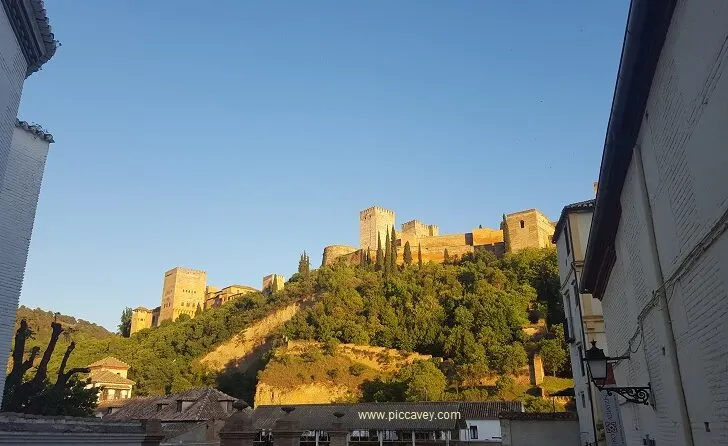
Yes, that’s the Arabic bathhouse. Where would they have gone for the ablutions before prayer in Muslim Granada, because the Granada was Muslim for 500 years under rule for 500 years, and they were present here for 711 years. So there’s a big footprint of that legacy, right? But as you walk along Paseo de Los Tristes, there’s certain spooky elements to that street. So as you look opposite, so you’re looking across to the Alhambra and there’s a big hill.
Molly (00:15:31) – And in that hill are many dungeons and tunnels and corridors, which is where the soldiers would have protected the monument from below, and also was places where you could detain people or smuggle things, hide things. You can imagine. Some of those tunnels and corners of that hill are supposed to be, haunted. There’s another part which is linked to Napoleon, which is very thematic at the moment with the film that’s just come out. Right? Yeah. And at the end of the street, directly below the Alhambra is this abandoned building that’s very beautiful to look at. It almost looks like a doll’s house in big.
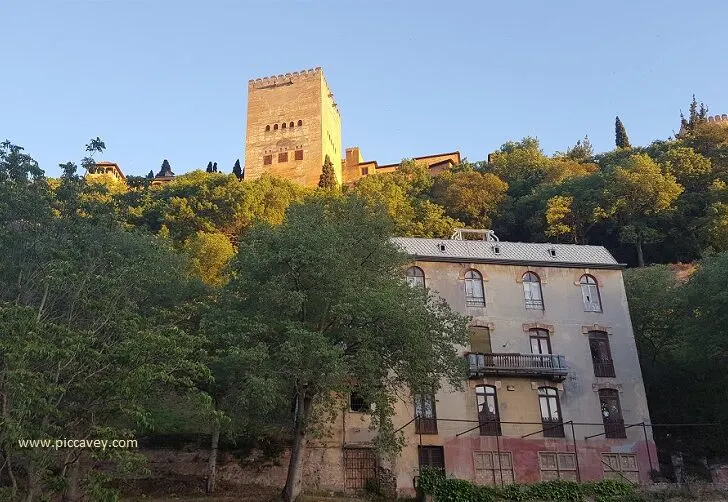
The Abandoned Building in Granada
Molly (00:16:16) – It’s very hard to explain because it’s very, like, symmetrical and cute. It’s just very quaint. Building is abandoned, and there’s a lot of legends linked to that building. Like a lot. Okay. It was built as a hotel, but when the people were at the hotel, they had a bad time because it’s next to the river and all the damp kind of seeped into the hotel and into the rooms.
Molly (00:16:41) – It was just like gave you colds and flu, and it was not a good place to stay. So it was known as the hotel of the Romantics. Like romantic hotel. It’s like, got this nickname in history. so it closed down as a hotel. It became a masonic lodge, and there’s a lot of kind of legends linked to that about it being haunted. And and it’s this crazy thing that it’s in the most touristic street, in the most looked out place, and it’s an abandoned building. It’s now taken over by the Junta de Andalucia, the local government. and they always say it’s going to be this and it’s going to be that, but it doesn’t seem to never happen. Advance. Yes. Oh, right. Okay.
Joe (00:17:25) – Well people should visit soon before it does finally get turned into something. It sounds like an opportunity waiting to happen for someone.

Strange festival or tradition in Andalusia?
Joe (00:17:35) – Can you recommend a strange festival or event or tradition in Andalusia?
Molly (00:17:40) – Oh my goodness, there are so many! Where do I even start? So I think we have to because of just the sheer impact of it.
Molly (00:17:49) – Talk about Easter. But now this is strange for some and not strange for others. One thing that I really want to talk about is the penitents. The penitents. Okay, who are the I’m going to say men, but it could be women who wear the hoods, that appointee that everybody always talks about the Ku Klux Klan. Yeah. I was going to say.
Joe (00:18:09) – To say, yeah, that’s not the first thing you think of with pointy hoods, right?
Molly: The thing is, the whole thing of the Ku Klux Klan and the penitence, there’s nothing really to do with one or the other. there’s no there’s no link. The only link is the fact that the Ku Klux Klan didn’t want to be known who they were, and the penitents don’t want to be known who they are. That’s the only link the penitents are people who have sinned. We’ve all sinned. But, they’ve sinned, and they want to repent their sins. And so they walk to repent their sins. And they want to be anonymous, which makes sense, which is why they wear the hoods.
Molly (00:18:50) – And it’s not anything negative. In fact, it’s the opposite. It’s a positive thing. So people who see the penitent and are scared or find it odd or find it uncomfortable. That makes me sad because it’s not a sad thing. It’s a positive thing. And I want people to understand that, especially American audience, because it makes them uneasy when they see them. And it shouldn’t be. It’s a it’s a positive thing. so that’s one thing I want to clear up about the strange festivity linked to Easter.
But also, the thing that I it makes me kind of not shocked, but I can’t believe that every year in Andalusia is how much adhesion or how much kind of uptake there is into this festival, because we’re into 2024 and we’ve got like AI and electric cars and all this kind of progress, but that doesn’t seem to shift. It’s the same, the same, the same. It’s like these traditions that protected they looked after. As older people pass on and younger people come through, they’re all maintained this good traditions.
Joe (00:20:05) – Fantastic. And I think it’s it’s just wonderful. It’s absolutely wonderful. Absolutely.
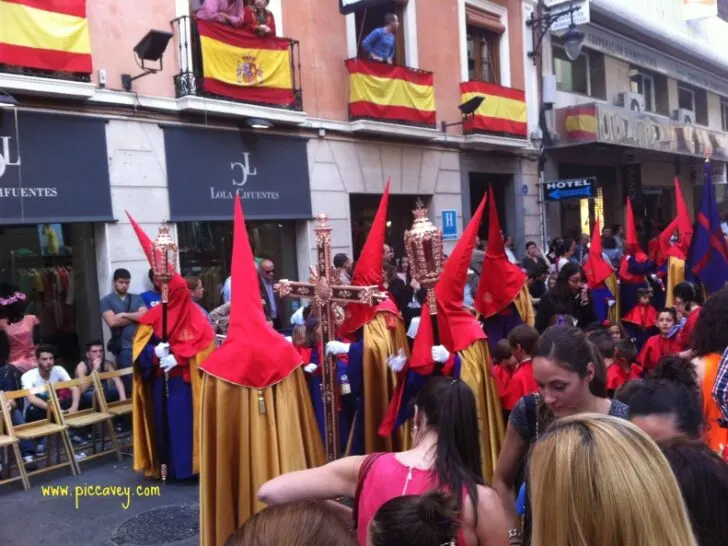
Joe (00:20:10) – Yeah. It’s not a given in many places. You know, there are lots of traditions dying out.
Molly (00:20:14) – No, no, not at all. Not at all. And here it’s saturated because it’s something that takes it’s more or less ten days of processions. And I don’t think people realize how much it affects the locals who live in these places. Seville and Granada and other cities that celebrate Easter. So heavily. the processions happen in the afternoon, so it’s normally from about 4:00pm. They go on until one, two, three, four in the morning. These processions, each one more or less, has about 200 people in. It depends on the on the specific church community, what they call brotherhood in Spanish, but more or less say 200. It could be bigger, it could be slightly smaller. But think that each day of Easter there’s going to be between four to eight processions in the street at any one time.
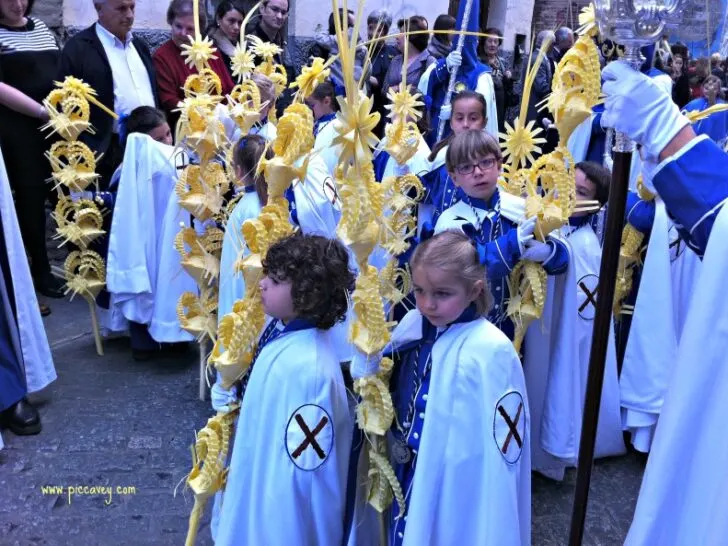
Joe (00:21:07) – Wow. So okay, four by 200 is 800 people doing the procession, right? And they’re all going from their church to the cathedral and then back again. So all the streets around the cathedral will be completely like a football match when it’s just kicked out. And then other streets going towards the churches of where they’ve come from also. So there’s road blockages and then those roads that are cut off, then the people are going on the other streets and then they’re equally blocked. So it, it really basically from for ten days.
Anything after lunchtime becomes very complicated. When I say anything, I mean normal life, like going to the dentist or going to have a meal out. You can say, oh, I don’t care about Easter, I don’t want to see processions, but you’re still impacted because you can’t move around freely. Yeah, yeah. So okay, when I say strange, it’s strange. Strange in the effect that it produces on the people who don’t understand what’s going on. Yes. And strange for the people who live here, we’re trying to do normal livesdespite all the disruption.
Joe (00:22:14) – Definitely a strange thing to turn up if you’re not expecting it, if you turn up in a city and this is happening.
Molly (00:22:18) – Wednesday, Thursday and Friday, they’re the biggest days and then it goes down. Then Saturday there’s something. And Sunday only in the morning.
Joe (00:22:26) – Right? Okay. So if you want to experience this as a visitor, I guess the best places to congregate around the cathedral. Rather than picking an individual church to go to? Or would you would you follow the procession?
Molly (00:22:39) – I don’t know, I think the, the nice thing to do is not to be really close to the cathedral. It’s to go a little bit further out, watch a procession, go and have a cup of tea and a cake, then come back. Then do another procession, another tapas stop or souvenir shopping. Space it out. Whereas if you are close to the cathedral, you’ve got your space and you’ve have to wait there the whole time.
Strange thing to Eat in Andalusia
Joe (00:23:09) – You’re settled in okay. Fair enough. Can you recommend a strange thing to eat or drink in Andalusia?
Molly (00:23:17) – I can’t resist, I have to share this. So, not surprisingly, in Spain and through its history has had a lot of hardship, a lot of very dark times, where there’s not been enough food to go around. Whether that’s linked to, problems with harvests, like when it was the great rot of the the wine industry the early 1800s or, after the Civil War, the depression in Spain.
So nose to tail, what this has been this food trend, eating all the parts of the animal has been a bit of a trend over the last ten years or so in other countries. It’s not a trend here, it’s just life. They have always done nose to tail. Yeah. So when you go to Spanish market, you will always see things like a whole pig’s face or pig’s cheeks or ears or pig’s trotters. I’m just saying pig, because they a lot of pork here, but the same as you can use the same to other animals.
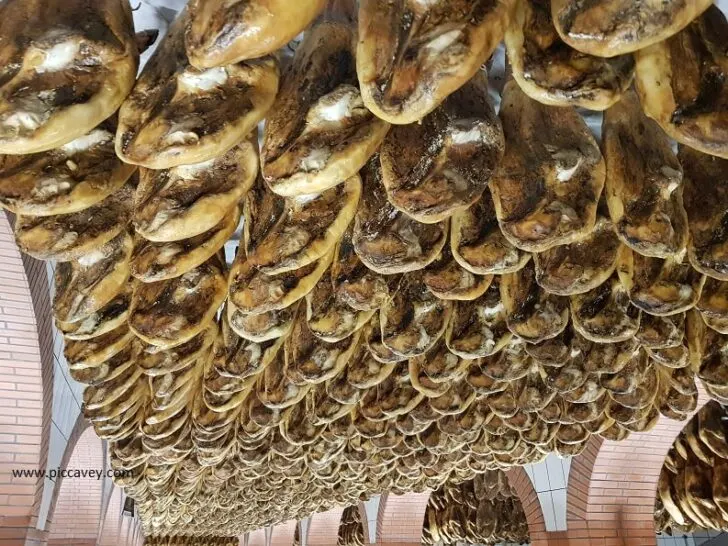
Molly (00:24:16) – They use all of it. Fish skin, cod skin. They fry it. And it’s like, do you know, like chicharron? It’s like the pork scratchings. Yeah. Pork scratchings. They do the same with cod, okay. And it’s absolutely delicious. If you have, cod skin which has been dried and salted. Yes. And you have that with a cold beer on a hot day. Oh, my God, it’s so, so good. It does soundn´t great. Sounds disgusting, but it’s not. It’s really, really.
Joe (00:24:42) – Well, for me it sounds great. But yeah I can imagine some people. Yeah.
Sacromonte Omelette
Molly (00:24:44) – But it’s really good because it’s just protein. Super healthy as well anyway. So no doubt very big thing in Spain. And it seems that in Andalusia they’re holding on to it a bit harder than perhaps other areas. So Granada, one of the most typical local dishes and traditional dishes is called sacromonte omelette. And it’s made with sheep’s brains and testicles.
Joe (00:25:10) – Sheep’s testicles.
Molly (00:25:11) – And sheep’s brains basically the pieces of the sheep that aren’t the noble parts, it’s the rest goes into an omelette.
Joe (00:25:19) – Okay. And how is it?
Molly No idea, I’ve avoided it. I’m a big fan of potato omelette myself. but I know it must be good, because it’s served in very, very good restaurants in Granada. And a lot of them. And it it continues. People order it, people eat it, people enjoy it. So it must be good.
Joe (00:25:43) – okay. Is there a particular place you’d recommend trying it?
Molly (00:25:45) – Chikito.
Joe (00:25:46) – That’s the name of the restaurant.
Molly (00:25:47) – Yeah. Chikito restaurant is really in the city centre. It’s a restaurant that’s been trading since 1920´s. It’s very charming, very traditional. They’ve got a nice, beautiful terrace opposite of fountain. And you can have tortilla de sacromonte and Chikito if you dare. Okay.
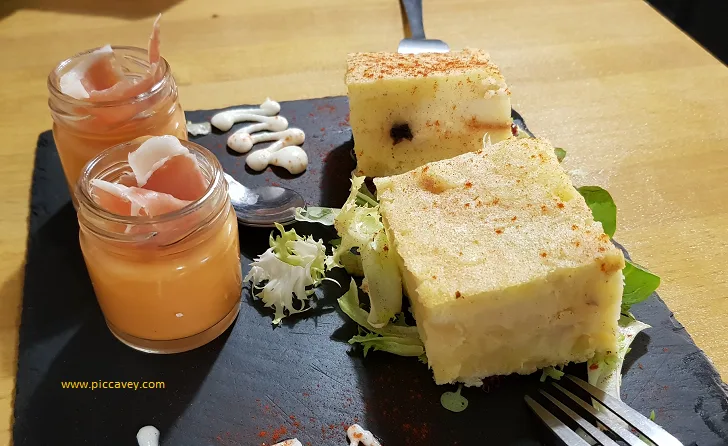
Joe (00:26:04) – Do they also do, potato tortilla if you want.
Molly (00:26:07) – They do a lot of amazing food there. Yeah. Okay. So like fried fish and lovely salads and great, salmon and Rabo de Toro like a ossobucco style oxtail dish.
Joe (00:26:22) – Oh, amazing.
Molly (00:26:23) – And they have the Sacramonte omelette.
Strange myth or legend in Andalusia?
Joe (00:26:29) – So next up, how about a strange myth or legend or slice of history in Andalusia?
Molly (00:26:35) – There’s so many old things around here and so many legends. one of them, I think is really powerful. And it’s to do with when the Muslims were ousted from from Granada. So the reason I’m focusing this point on Granada is because the Muslims were in the southern part of Spain. The last place that they remained was Granada. Was the Alhambra. So once they left the Alhambra, there was no Muslims on the Iberian Peninsula. That’s why it’s key. So when Boabdil, who was the last ruler of of the Muslim kingdom in Spain was leaving. Isabella Catolica made a pact with him that his people could carry on living here in peace. And then she went back on her word. Okay. So it wasn’t very good.
Molly (00:27:34) – It was an agreed surrender, and he handed over the keys to the Alhambra, trotted off on his horse with his mum going South. When he got to a point which is, near Otura. Just a slight way out of Granada nowadays. You’re on the motorway. But then it would have been a road. And as you look back, you can see the Granada, Granada city, and then above the Alhambra, like a cherry on top of a cake.
The Departure of Boabdil
So the Alhambra is here in the cities below, and the mountains are to one side. Snowy mountains. Beautiful. So he stood there, and he contemplated this for one last time. And as he was looking, he shed a tear. And the legend says that his mother, his mother said to him,
you’re crying like a woman for a city you didn’t defend as a man.
Wow, man. Yeah, yeah. And, I just really remember this kind of expression and this moment. Yeah. Okay. So. Wow.
Joe (00:28:31) – Yeah, that’s quite a powerful insult.
Molly (00:28:34) – Yeah, but the key part of this is that it’s important that people take away that they they surrendered. The Christians didn’t win a battle against them. They weren’t defeated. They surrendered. Right. That’s really important. And a lot of people gloss over and don’t mention that part. And I think it’s really important to mention it that they surrendered. Okay.
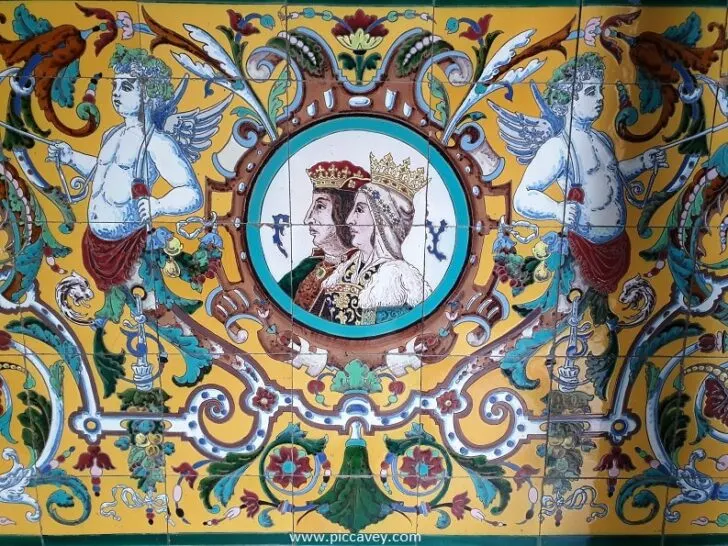
Joe (00:28:53) – Noted. Next I’m going to ask for this thing I’m calling Stranger Danger. I’m not sure that’s advisable, but I am. are there any customs of visitors to Andalusia that might be perceived as strange by the locals?
The Matter of Time in Andalusia
Molly (00:29:11) – There’s so many. There’s so, so many. I think that one of the most impactful ones is the timing. The timing of, like, the way the day structured, because that really when you when you come and stay here, whether it’s winter or summer, it really has a big impact on you as a visitor or as an expat. If you come to live here, it doesn’t matter.
Molly (00:29:34) – It’s the same. So people always ask about the siesta. People always ask about why why dinner is so late, why breakfast is so late. This is, I think this is the like you say, stranger danger. Because here in Granada and in smaller Andalusian locations, you can’t choose your timetable. It’s not 24 seven like the rest of the world. Well, I feel that the rest of the world is doing 24 seven, but here it’s not. So if you’re American and you go out for a run in the morning and you want coffee at 6.30am, you can’t have it, right? Okay. That’s it. There’s none.
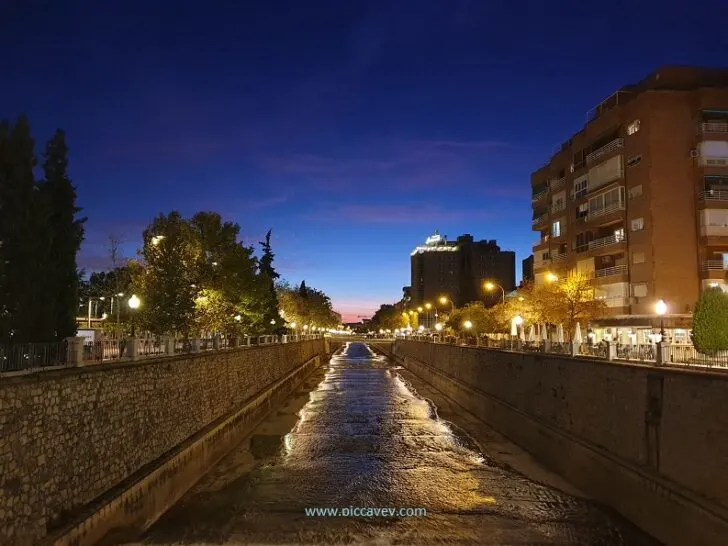
So here they’re doing their timetable, their way, their structure. And there’s a visitor to try and do. Your way is very, very difficult. Shops close between 2pm and 5.30pm. So there’s there’s nothing happening between 2pm and 5.30pm. That’s when you’re supposed to be eating right or having a siesta and dinner. Dinner starts here around 8.30pm. So for example, tomorrow I need to have dinner around 6.30pm, which is very strange for me.
Molly (00:30:45) – I don’t ever do this, but tomorrow that that’s what I’ve got to do. And I’m having major problems in the city centre finding places to have dinner at 6.30pm. Okay, I think I’ve got a choice of about six places. Wow. The whole of Granada. Okay, so this thing of the timings, I think that’s the biggest impact on people that breakfast is from, I think around 8.30am. They’re the earliest places you would find a few odd ones that night near a bus station or near a building site that might open around 7.30am.
The Wrong Time Zone?
But it’s not easy to find early breakfast places in Granada because the locals don’t start. Until later because they’ve gone to bed later and everything is later. The whole thing about the later is that Spain is on the wrong time zone. Yes, General Franco ordered that the time was altered in the 1940´s. So Spain would be on the same time zone as the rest of Europe, Italy and France, etc.. And so if you actually look at a map, Spain sits below the UK and we should have be on the same time as the UK, which for me would be ideal because I could phone my mum and dad and know exactly what time I’m phoning because I never get it right.
Joe (00:31:58) – Portugal is right, Portugal is on that time zone.
Molly (00:32:01) – Correct. So? So Portugal and Spain should have the same time and so should England. The same as Canary Islands. Canary Islands also has GMT.
Joe (00:32:09) – Well, I would have thought Canaries. Is this a long way west, isn’t that. it’s a little bit over there, but not that much. I would have thought.
Joe (00:32:16) – That’s too far the other way for them. They need another hour.
Molly (00:32:18) – The other way maybe. Yeah. Anyway, Spain is on the wrong time timetable by one hour. Yes. And so that one hour and then the the heat and the light and everything, it makes everything later. So if you took that one hour away and I say we’re not starting to have dinner until 930, ten really it’s 839. Yes. Okay. Which isn’t actually that late. Yes.
Joe (00:32:44) – I mean, I’m living in Prague. I’m on the same time zone, which is bonkers. But also we have the complete opposite food culture. You know, breakfast finishes at eight and dinner starts at five.
Joe (00:32:57) – I mean, my my wife used to go out for lunch with her work colleagues at 1030 in the morning. They’d have a reservation at 1030 for lunch.
Joe (00:33:05) – So now it’s 11.20am. What are you doing? What’s the food situation right now?
Molly (00:33:11) – there will be Czech people now. I mean, Prague has now kind of become a bit more normal, I would say, like people going for lunch at 1231. Yeah, but ten years ago, in Prague and still outside of Prague, people will be having lunch now. 1120 definitely. They’ll they’ll be restaurants for the people having lunch. Wow. The lunch lunch menu tends to start at 11, sometimes even earlier. And if you go at 1230 it will be empty. Everyone’s done.
The Second Breakfast
Molly (00:33:34) – Right. So we’re having now it’s like what I call second breakfast.
Joe (00:33:40) – Okay, that’s a, Lord of the rings thing, isn’t it a Hobbit thing?
Molly (00:33:44) – I don’t know, I’ve not seen that, but.
Joe (00:33:45) – Okay. Elevenses.
Molly (00:33:47) – Yeah. Brunch. A lot of Spanish people just in the morning, 8:00, 830.
Molly (00:33:51) – You have coffee with milk and no food. Oh, okay. And then now they have another coffee with the food. So with toast. Okay. Toast, olive oil, tomato, maybe ham, maybe cheese. Lovely. Yeah. So now it’s what we call second breakfast. Because lunch will be around 2.30pm. Right. Yes.
Joe (00:34:11) – I mean, that sounds great. I mean, that fits with my, I think my biological clock. I don’t know what you call it. My, Yeah. Natural rhythm.
Molly (00:34:20) – Yeah, yeah.
Joe (00:34:22) – So the stranger danger is basically people coming with their own expectations of scheduling and timetabling.
Molly (00:34:27) – The timings are all over. Yeah. So shops are closed when mostly tourists want to buy. Wants to do shopping. 2pm, 3pm, 4pm, though all the shops are closed. Not all of them, but the, the independent ones, the nice ones close. And, all the markets around food markets generally only open in the mornings, not in the afternoons.
Molly (00:34:49) – And. Oh, here Saturday afternoons closed shops are closed and Sunday as well. Sunday. The whole day. Yeah. So a lot of that really disrupts the expectation, eating times, times of commerce and this siesta thing and the. Yeah, that I think that’s a big, a big e that people under really underestimate.
Joe (00:35:11) – Yes. Okay. Especially if you’re coming for a weekend I think.
Molly (00:35:15) – Oh my. The worst thing you can do is like arrive to Granada on a Sunday morning and leave on a Monday. Yeah. That’s like the that’s like the worst because Monday a lot of museums are closed. It’s like the it’s just like the closing day and a lot of restaurants closed on a Monday or on a Sunday night. Yeah. That’s like disaster. Okay.
Joe (00:35:36) – That’s a good tip. So come join the week if you can. If you’re going to do.
Molly (00:35:39) – A Tuesday to Thursday ideal. Yeah.
A Strange Day Trip from Andalusia
Joe (00:35:45) – Last but not least I’ll ask for. Your strange day trip from Andalusia.
Molly (00:35:49) – So, I don’t know if it’s a day trip. It depends where you’re located. But if you’re located in the Seville, Cardiff part of Andalusia, then. Then it could be a day trip. But from anywhere else, it’s going to be more of an overnight. Extremadura is an area that’s it’s between Portugal and Madrid, more or less, just so you can imagine it. and it’s Extremadura means extremely hard, like a, it’s a hard terrain because it’s very, very hot in summer. It’s, got excellent cheeses and. A lot of agriculture. And several points of interest there. Casares, Trujillo. And my absolute favorite, Guadalupe.
Guadalupe Monastery
These places or historically like for architecture and historical sites, absolutely incredible. but Guadalupe has a monastery, and it’s a very small town. I don’t even know if it qualifies as a town. It’s very small. place in the middle of the countryside. It has a parador, and it has the Guadalupe Monastery, which is just absolutely incredible. Absolutely amazing place to visit. But you have this kind of sensation of driving and driving and driving, and there’s nothing around you thinking, oh my goodness, are we going the right way? Because we’ve come a long way.
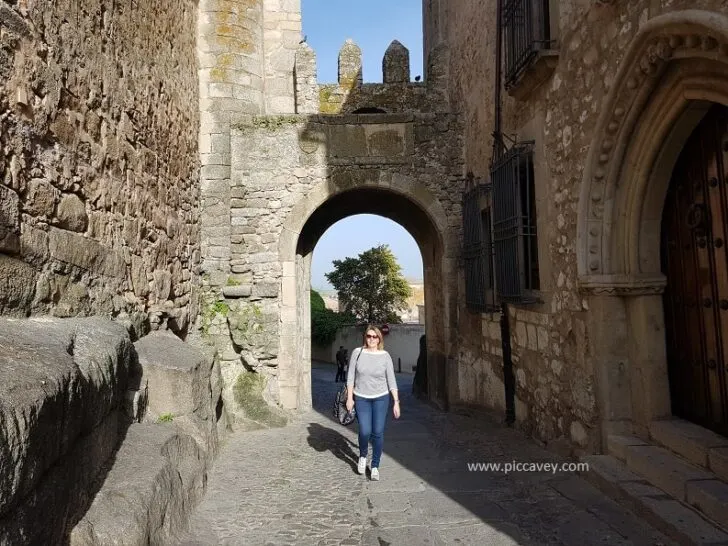
Molly (00:37:19) – If we’ve if we’ve gone wrong and you’re just driving through this beautiful countryside of oak trees and, cork trees and lush greenery, and then you come to Guadalupe. It’s absolutely charming. Haha, yeah, I can’t it’s very difficult to explain how magic is through words. It’s just you can’t expect this monument and this huge monastery to be in the middle of nowhere, because it’s so grand. And so it seems very, very important, but it’s so removed from everything since then. It’s insane.
Best Recommendations for Andalusia
Joe (00:38:03) – So that’s the strange stuff done. Can you give me a few straight up recommendations for Andalusia? The things that you think people shouldn’t miss?
Molly (00:38:10) – Okay, so I live in Granada. Disclaimer so if you didn’t already figure that out. so you have to visit the Alhambra. You have to book book your flights to come to Spain. And the moment after book your entrance ticket to the Alhambra.
Joe (00:38:27) – Yes, it is a very booked up.
Molly (00:38:29) – It seems that every year it’s super popular and you think it can’t get more popular, and the next year it does.
Molly (00:38:35) – So it’s very, very difficult to get tickets on the weekend at Easter, around Christmas time. Shoulder season March, April, May and September and October. They are the worst times. But basically what I’ve just said is half the year. So to book your tickets you need passport numbers and details for every single guest. So it’s not an easy thing to book the tickets and only book the tickets online at patron. Oh, it’s the official site. That’s where you need to buy the tickets. Okay, it’s about €20 per person.
Sagrada Familia and The Alhambra
I’m saying that because in the whole of the country of Spain, there are two places that are always number one and number two, and it’s Sagrada Familia in Barcelona and the Alhambra in Granada. And those are the most visited places, the most popular and the most difficult ones to get the tickets. When you you can only go on Tuesday morning, for example. So I would certainly book that ahead of time in Andalusia. Things I would recommend is, you’ll do a lot of walking when you’re in Andalusia wherever you go.
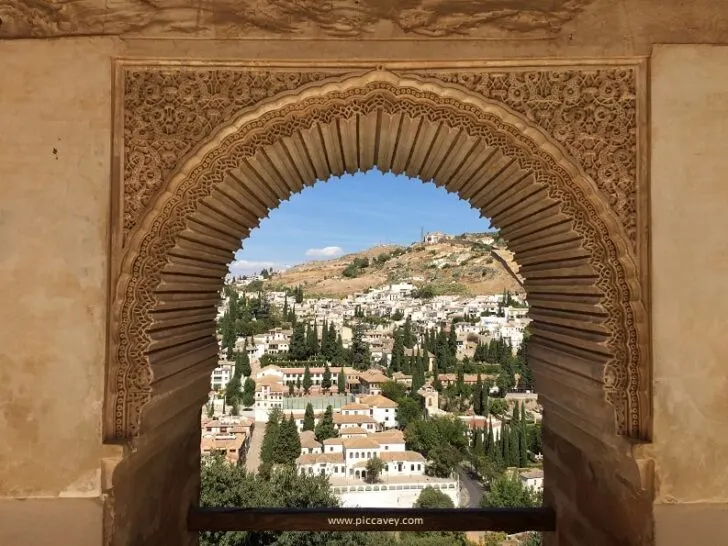
Molly (00:39:43) – So something I like to recommend people is to go to the hammam. Which is an Arabic baths. There’s one in Cordoba, there’s one in Malaga, there’s one in Granada, this one in Seville. One company is called Aire like air, and the other one is called Hammam Al-Andalus. Both are equally good, and it’s, an absolute tonic.
Of course there is this kind of tenuous historical link where it’s what the Muslims would have done in their day when they were in the Kingdom of Andalusia. But it’s not quite historically correct because it’s men and women together, and we wear swimsuits, and it’s very different than how it would have been. But, it’s a nice activity to do when you’ve been walking around and you’re hot and bothered. Then you go and have, the Arab baths session and a little bit of massage and a little bit of mint tea and some peace. Oh.
Joe (00:40:39) – Sounds great.
Molly (00:40:40) – Yeah, it’s a nice, nice thing to do when you’re in Andalusia.
Best time to Visit Andalusia?
Joe (00:40:45) – So if we take our number out of the equation, when is the best time of year to visit Andalusia?
Molly (00:40:52) – Shoulder seasons.
Molly (00:40:53) – So, March, April, may. if you visit at that time, spring, March, April or May make an active decision about Easter. You’re coming at Easter because you want to see it. Or if you don’t want to see Easter processions do not come at Easter. It’s the most expensive time, the most busy time, and the time when you’re going to get the worst service because everything is overrun. So if you want to come at Easter because you want to see processions, then that’s fine. Then make an active plan for that. But if you’re not bothered about processions, I would deliberately not choose Easter. Right.
Shoulder Season
Then the other side is September and October. The reason I’m saying these shoulder seasons is because of the heat. It gets very hot in Andalusia. In Granada, we’ve had temperatures of, maximum temperatures over the last few years of 46C, 47C. And overnight it doesn’t go down below 30C, 28C. Something you may think is not important when on ho
Molly (00:41:52) – But when you’re walking up a hill at 2pm in the afternoon back to your hotel, you will care. Yes. so I would particularly try and avoid summer. So that’s 15th of June till 15th of September, which is when the Andalusian children are not in school. I would avoid that time and head for, either spring or autumn just because it’s warm weather.
Best Time to Visit Andalusia? Find a month by month analysis here
Pleasant if you choose to come in winter, which is November to January, it could rain. It could be cool or cold. we do get cold weather here, which some people are like completely bamboozled by. They just think we’re in Spain. Why? Why can’t I wear my flip flops like we do have winter? but you’re going to get cheaper hotel rates and you’re going to get, I think, a better feel of how real life is because it’s the time when there’s least international tourism about. Right. But the only risk is it might rain or it might be cooler than you expect.
Joe (00:42:53) – Last thing to finish us off. Can you tell me the strangest sights you’ve seen elsewhere in the world?
Molly (00:42:58) – So I’m going to stick with Spain, even though I have travelled around different places in the world.
The Legend of Santa Eulalia
Molly (00:43:02) – I lived in Barcelona for a really long time, and the Gothic water has got a lot of stories that I don’t think people realize when they’re walking around the streets. This Santa Eulalia. In Roman times there was this legend about the persecution of Eulalia. It was said that she was, rolled in a barrel down the street. So it’s quite, it’s quite violent.
Joe (00:43:30) – Yeah. No, this wasn’t a, a ride. This was a torture, right? No.
Molly(00:43:34) – So this is around the year 300. So this is a very, very long time ago when things were quite, Yeah. Grim, shall we say. So, her body is actually buried in Santa Maria del Mar, which is a beautiful church in the Gothic water. And there’s a street called Santa Eulalia in Barcelona. And on that street, as you walk down it, there’s, a thing called in Spanish, we call it an Athena. It’s like a coat, a cove in the wall with her figure in there.
Joe (00:44:07) – Like an alcove? Yeah.
Molly (00:44:08) – An alcove. That’s it. In Spanish, it’s all nothing. And it’s an alcove with her figure in there behind the glass. So you can remember her and her? Yeah. Her plight. And, she’s. Because she wouldn’t give up her faith. She was tortured. And as I said, she would roll down this barrel down this street, which is the street when you see it is a very, quite a steep hill. You can imagine if a barrel went down, it would go down fast, right?
Joe (00:44:38) – Yeah.
Molly (00:44:39) – Yeah. So this, this kind of whenever I walk along that street, like I can’t forget the legend because it’s just like, really once you hear it or read the story, like the full story is like a little bit more grim than what I am explaining.
Joe (00:44:53) – Well, I think I think she was quite young. Was she 13 something?
Molly (00:44:57) – Yeah, she was a girl. She was a girl.
Joe (00:44:59) – So I’m with her, like, I mean, I recall something about, you know, there were some objects inside, like the sun, sharp objects and something inside the barrel.
Molly(00:45:10) – I don’t know. I mean, either way, it would not be a pleasant experience. I imagine being rolled down a barrel.
Molly (00:45:14) – Well, she was tortured and she was hit, and, it said that when she died, there was a snowstorm and it covered her. And there’s all these different layers to the story.
Joe (00:45:26) – So if you’re visiting Barcelona, you can go and find out a bit more. Yeah.
Molly (00:45:29) – It’s, the street name in Catalan is L´Arc de Santa Eulalia.
Molly (00:45:35) – That here. I’m just reading it. It says shards of glass were in the barrel.
Molly (00:45:39) – Yes.
Joe (00:45:40) – Lovely. Oh, my. God.
Joe (00:45:41) – I’d imagine this. I wonder if it rolls the whole way or if it starts bouncing as well. Maybe if it goes down a hill, I.
Molly (00:45:47) – Think it would roll because it’s not. It’s like a very smooth or at least now, I don’t know, in the three hundreds if it was smooth. But right now they’re very large stone flags and they it’s very, very smooth surface.
Joe (00:46:02) – So I can imagine it would roll beautifully down there. So aesthetically pleasing experience for everyone who’s not inside the barrel.
Joe (00:46:22) – There we have it. Strange old Andalusia. A huge thanks to Molly for all her recommendations. Of course, because of some slightly shoddy scheduling, we’ve just missed Easter 2024. But Molly suggests booking early, so why not set up 2025 now? She’ll be happy to help, of course. Get in touch with her.
Remember you’ll find all Molly’s tips up on our website, Strange old World, along with links to her blog and to share up her food tours. I also promise you my choice of Strange Andalusia attraction.
Eating Yemas from Seville
And I’m going for this eating Yemas from the convent of San Leandro in Seville. Now, it’s not the weirdest thing I’ve recommended. It’s no withered arm in a Prague church or pickled head in Elizabeth Museum, but it’s definitely the tastiest.
Yemas are little sweet cakes made from egg yolks in Spanish and sugar. The strangest way to get some is to enter the convent of San Leandro in Seville, put some cash down on a tray and rotate it behind a wall.

